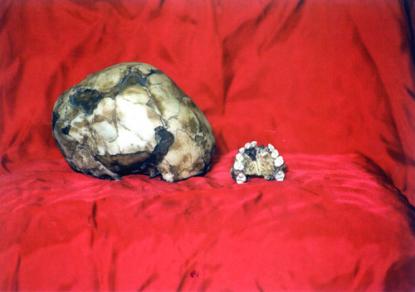2024. April 26. Friday
Subalyuk-Museum - Cserépfalu
|
|
Address: 3413, Cserépfalu Kossuth utca 152.
Phone number: (49) 423-132
E-mail: hivatal@t-online.hu
Opening hours: 01.05-30.09: Tue-Sat 10-16
|
Museum tickets, service costs:
|
Ticket for adults
|
200 HUF
|
|
|
Ticket for children
|
100 HUF
|
|
|
Ticket for pensioners
|
100 HUF
|
In the first room the work of painter István Demjén represents the figure of the Neander-valley man.

In the second room we can read about the archeologic significance of the Subalyuk, where the most important relics of the Neander-valley man were excavated by János Dancza and Ottokár Kadic. In the photocopies we can see the stations of the excavation, and another display represents the exact spots where the relics were found. In the photographs we can see the approach toward the caves, read an interview with János Dancza. Up to 1948 the cave had been called Mussolini cave.
In the second half of the exhibition we can see the photographs of the stone tools, the reconstructed drawing of the Neander-valley, as well as the fauna of the era and the hunting secrets of the cave goats. Interesting to note that the stone tools found in the deeper layers were made in a more demanding way. These pieces are the fruits of the so-called Moustiéri civilization. By the side of the glass-case we can see a real prehistoric hunting rod, which was found on the top of the Suba-lyuk.
In the third part of the exhibition we can see the photographs of the findings. Old burrial customs are also represented. The most important items are displayed in the glass case: the number 1 copies of female bones (knee, cross bones, spine fractions) and a child skull, which were exhibited in the Natural Science Museum. These world famed relics were given to us through French donations, and can only be seen in our museum.
The plaster copy of the Neander-valley child made by Swiss antropologist G. Skultéty is also exhibited.

In the second room we can read about the archeologic significance of the Subalyuk, where the most important relics of the Neander-valley man were excavated by János Dancza and Ottokár Kadic. In the photocopies we can see the stations of the excavation, and another display represents the exact spots where the relics were found. In the photographs we can see the approach toward the caves, read an interview with János Dancza. Up to 1948 the cave had been called Mussolini cave.
In the second half of the exhibition we can see the photographs of the stone tools, the reconstructed drawing of the Neander-valley, as well as the fauna of the era and the hunting secrets of the cave goats. Interesting to note that the stone tools found in the deeper layers were made in a more demanding way. These pieces are the fruits of the so-called Moustiéri civilization. By the side of the glass-case we can see a real prehistoric hunting rod, which was found on the top of the Suba-lyuk.
In the third part of the exhibition we can see the photographs of the findings. Old burrial customs are also represented. The most important items are displayed in the glass case: the number 1 copies of female bones (knee, cross bones, spine fractions) and a child skull, which were exhibited in the Natural Science Museum. These world famed relics were given to us through French donations, and can only be seen in our museum.
The plaster copy of the Neander-valley child made by Swiss antropologist G. Skultéty is also exhibited.
